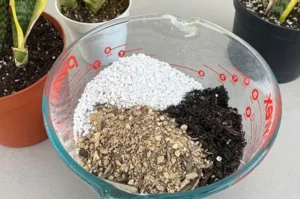Snake plants (Sansevieria), known for their striking vertical leaves and hardiness, are a favorite for both indoor and outdoor gardening. While they’re celebrated for surviving in low light, many plant lovers wonder — can snake plants handle full sun, and if so, for how long?
In this article, we’ll explore how much full sunlight a snake plant can tolerate, the signs of sun stress, and tips to keep your plant thriving under different lighting conditions.
Understanding Snake Plant Light Needs
Snake plants are native to West Africa, where they grow in rocky, arid regions. In their natural habitat, they receive a mix of bright indirect sunlight and occasional direct sun, especially during mornings and late afternoons. This background gives them a high level of adaptability, but not all sunlight is created equal.
Ideal Lighting: Bright, Indirect Light
Snake plants prefer bright, indirect light. This is where they photosynthesize efficiently without risking damage to their thick, moisture-retaining leaves.
However, that doesn’t mean they can’t take direct sunlight—it just has to be in moderation.
How Many Hours of Full Sun Can a Snake Plant Tolerate?
Short Answer: 2 to 4 Hours of Mild Direct Sunlight
A snake plant can tolerate about 2 to 4 hours of gentle, direct sunlight per day, ideally during morning or late afternoon. Harsh midday sun, especially in hot climates, can scorch the leaves and cause long-term damage.
If you’re planning to keep your snake plant outdoors or near a sunny window, keep these key factors in mind:
- Morning sun is gentler and usually safe for a few hours.
- Midday sun (from 11 am to 3 pm) is too intense and can lead to sunburn.
- Filtered or dappled light is a great alternative for longer exposures.
Signs Your Snake Plant is Getting Too Much Sun
Even though snake plants are tough, too much full sun can overwhelm them. Look out for these warning signs:
- Brown or crispy leaf edges
- Bleached or yellow patches
- Wrinkled or drooping leaves
- Curling of the foliage
If you notice any of these, it’s time to adjust your plant’s exposure.
How to Safely Expose Snake Plants to Sunlight
Snake plants can be gradually introduced to full sun, but it must be done with care.
Step-by-Step Sunlight Adjustment:
- Start with Bright Indirect Light: Place the plant near a north- or east-facing window for the first few days.
- Gradually Introduce Direct Sun: Add 30–60 minutes of early morning sunlight each day.
- Increase Exposure Slowly: Over two weeks, work up to 2–4 hours of direct light.
- Monitor Regularly: Check for stress signs and move the plant if needed.
This acclimation process helps your snake plant build tolerance without getting sun-damaged
Best Locations for Sun Exposure
Here are the most suitable spots for maximizing light without overexposing your plant:
| Location | Sunlight Type | Exposure Time | |
| East-facing window | Morning sun | 2–4 hours | |
| South-facing window | Filtered light | All day | |
| Balcony with dappled shade | Light shade + sun mix | 3–5 hours | |
| Outdoors in cooler climates | Mild full sun | 2–4 hours |
Remember, sunlight intensity changes with the season, so always monitor your plant’s condition.
Do All Snake Plant Varieties Tolerate Sunlight the Same?
There are many varieties of snake plants, such as:
- Sansevieria trifasciata ‘Laurentii’
- Sansevieria cylindrica
- Sansevieria ‘Moonshine’
- Sansevieria ‘Black Gold’
While all these varieties enjoy similar care, lighter-colored types like ‘Moonshine’ are more sensitive to intense sun and may burn faster. Darker varieties, like ‘Black Coral’, usually handle sunlight better.
Benefits of Controlled Sunlight
Proper sunlight offers several benefits to your snake plant:
- Boosts Photosynthesis: Supports healthy growth and vibrant color.
- Prevents Overwatering Issues: More sun leads to quicker soil drying.
- Strengthens Immunity: Well-lit plants are more resistant to pests and rot.
But remember, balance is key. Too much of a good thing can become harmful.
Conclusion
Snake plants can tolerate full sun, but only in moderation (ideally 2 to 4 hours of gentle sunlight per day). Morning or filtered sunlight is best. Extended exposure to strong midday rays can lead to leaf damage, stress, and slower growth.
If you’re placing your snake plant in a sunny spot, ease it into the light gradually and watch for any stress signs. With proper care and light management, your snake plant will stay healthy, green, and thriving.






